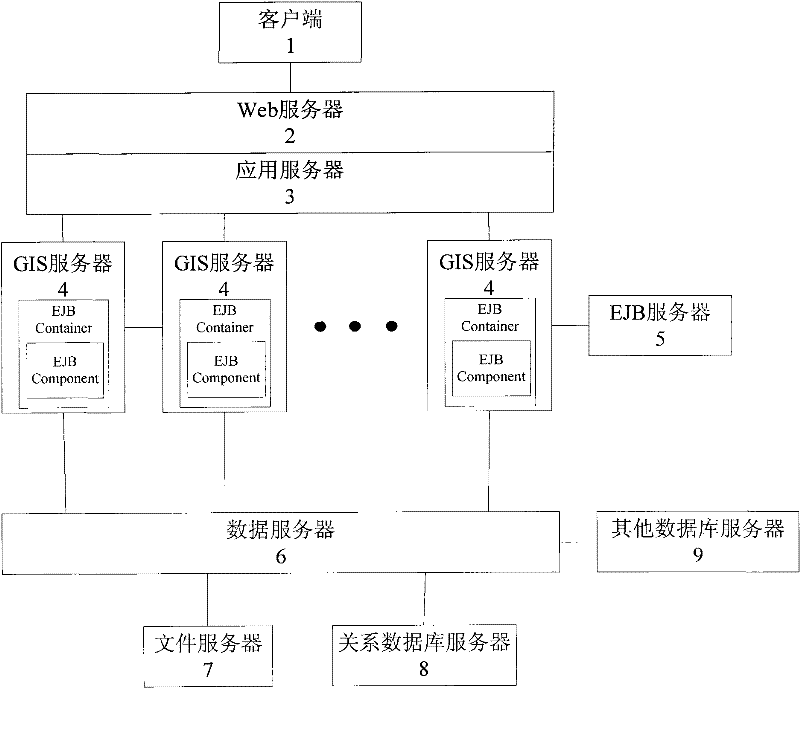Web geographic information system (GIS) based on java 2 platform enterprises edition (J2EE) and enterprises java bean (EJB)
A GIS server and server technology, applied in the field of J2EE/EJB-based WebGIS systems, can solve the problems of weak raster mode processing function, small data volume, and low interaction times, and achieve the effect of ensuring the ability to process vector data
- Summary
- Abstract
- Description
- Claims
- Application Information
AI Technical Summary
Problems solved by technology
Method used
Image
Examples
Embodiment 1
[0017] In order to compete with Microsoft, Sun Microsystems released the EJB specification, which is supported by a large number of companies and organizations such as IBM, Oracle, and BEA. Following the EJB specification makes it unnecessary for application developers to understand the details of low-level transactions and state management, multi-threading, resource sharing and other complex low-level APIs, so that they can focus on the development of business logic and easily build distributed applications. Because the J2EE inverted B model uses pure Java technology, it is more attractive than the COM+ model because of its cross-platform nature, that is, "write once, run anywhere". But it should also be noted that JavaBean is not as efficient as COM+ objects when implementing the same GIS function because Java uses a virtual machine mechanism.
[0018] The implementation framework of WebGIS based on J2EE / EJB is as follows: figure 1 Shown, comprise client 1, Web server 2, ap...
Embodiment 2
[0020] Such as figure 2 As shown in the figure, it is a logical block diagram to realize the functions of a website such as map release, information query, shortest path analysis, buffer analysis, and thematic map creation.
[0021] The function and performance test of the website was carried out, especially the concurrent user access test, which is an indispensable link before the release of the enterprise-level WebGIS system. The performance test of the website was carried out using the commercial software WebPer-formance2.0, and the results showed that due to the adoption of Object pool, instant activation, data caching and other technologies, the system supports 400 users concurrent access and 4000 users click and zoom operation at a rate of once every 1s for 10 minutes.
PUM
 Login to View More
Login to View More Abstract
Description
Claims
Application Information
 Login to View More
Login to View More - R&D
- Intellectual Property
- Life Sciences
- Materials
- Tech Scout
- Unparalleled Data Quality
- Higher Quality Content
- 60% Fewer Hallucinations
Browse by: Latest US Patents, China's latest patents, Technical Efficacy Thesaurus, Application Domain, Technology Topic, Popular Technical Reports.
© 2025 PatSnap. All rights reserved.Legal|Privacy policy|Modern Slavery Act Transparency Statement|Sitemap|About US| Contact US: help@patsnap.com



